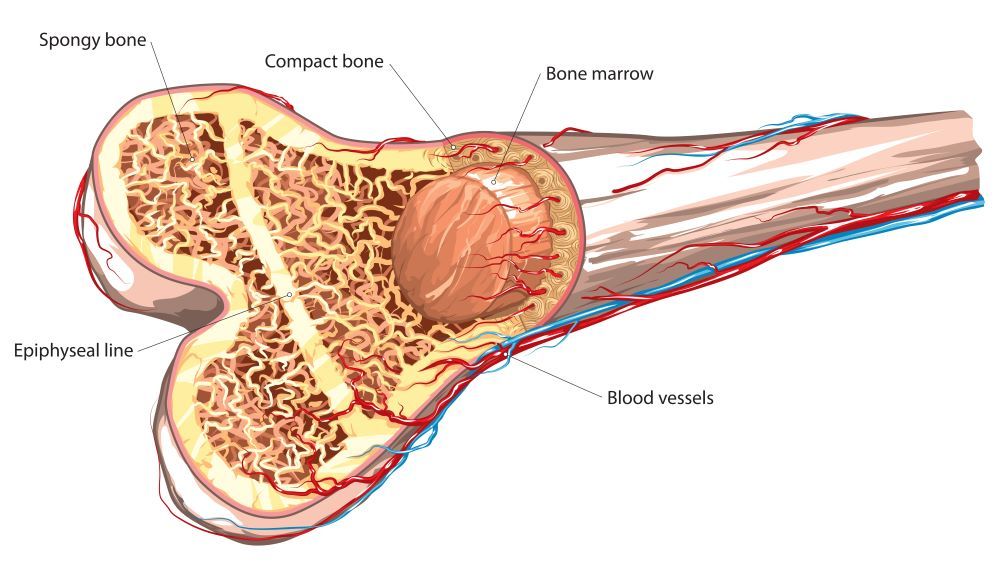4.2 Bone structure
Bones are made up of 70% minerals, the most important of which are calcium and phosphates. The minerals make our bones very durable. The rest of the bone consists is collagen protein. Collagen protein has a structure similar to a triple-stranded rope. It makes the bone longitudinally flexible.
Bones contain blood vessels, nerve cells and living bone cells known as osteocytes. These are held together by a framework of hard, non-living material that contains calcium and phosphorous. The blood vessels nourish bone tissue and supply oxygen. Bones also feel pain through their nerve cells, which are connected to the nervous system.
A thin membrane called the periosteum covers the bones. New cells grow in periosteum as the bone grows. Cancellous bone is the layer beneath the dense periosteum that contains durable trabeculae.
Running along the centre of long bones, such as your femur (thigh bone), is a cavity filled with bone marrow. Red bone marrow is a soft tissue that produces blood cells, whereas yellow bone marrow is used to store fat.

Parts of the bone.